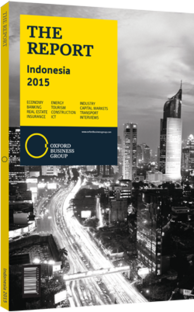Share analysis: Kalbe Farma – pharmaceuticals
The Company
Kalbe Farma (KLBF) was established in 1966 in a humble garage house in North Jakarta by six siblings: Khouw Lip Tjoen, Khouw Lip Hiang, Khouw Lip Swan, Boenjamin Setiawan, Maria Karmila and F Bing Aryanto. For over 40 years, the company has been aggressively expanding its business, both organically and through strategic acquisitions, to become a provider of integrated health care solutions. It acquired Dankos Laboratories in 1977, Bintang Toedjoe and Hexpharm Jaya in 1985, Woods’ brand and Saka Farma Laboratories in 1997, as well as Sanghiang Perkasa in 1993.KLBF has also been active in research and development (R&D) for leading-edge generic drug formulations, as well as developing innovative consumer and nutritional products.
Through strategic alliances with international partners, KLBF has also started to support several successful R&D ventures working on cancer drugs, stem cells and biotechnology research. The company established the Stem Cell and Cancer Institute in 2007. KLBF also entered the business of medical device trading by establishing Renalmed Tiara Utama in 2008.
The company listed the shares of its subsidiaries, Igar Jaya and Dankos Laboratories, on the Indonesia Stock Exchange in 1989. KLBF itself and its subsidiary Enseval Putera Megatrading conducted their initial public offerings in 1991 and 1994, respectively. Today, KLBF has become the largest-publicly listed pharmaceutical company in South-east Asia, with market capitalisation of nearly $6bn. KLBF businesses are grouped into four major segments: prescription pharmaceuticals, consumer health, nutritionals, and distribution and packaging. In Indonesia, KLBF maintains coverage of over 70% of general practitioners, 90% of specialists, 100% of hospitals and 100% of pharmacies for the prescription pharmaceuticals market, as well as 80% for the consumer health and nutritional markets. KLBF has also established its footprint in Southeast Asian and African markets, inking 18.3% compound annual growth for export sales in 2010-14.
Development Strategy
In the prescription pharmaceutical segment, Indonesia’s expanded National Healthcare Insurance programmes should exert a positive impact on KLBF unbranded generic products. However, margins on unbranded generic products are thin. To compensate for this, KLBF has assigned more effort into developing oncology products; we expect this will contribute approximately 5-10% to the segment revenue by 2016. In the consumer health segment, energy drinks (Extra Joss) and ready-todrink products will continue to drive top line growth. New over-the-counter products, such as Hydro Coco, Original Love Juice and Bintang Toedjoe Masuk Angin, should also continue to enjoy robust growth in 2015. In the nutritional segment, growth will come from new product launches such as Zee, Fitbar and Dive, along with top-selling products like Morinaga, Prenagen and Diabetasol. In the distribution and packaging segment, we see great challenges emerging from stricter regulations from the government, along with increasing integration with clients’ distribution chains.
Forecast
We project FY2015 revenue to grow by 10.5% year-on-year (y-o-y), mainly underpinned by robust growth in nutritional and consumer health products, sales of which we assume to grow by 19% and 16.7% y-o-y, respectively. For prescription pharmaceuticals, we expect revenue to grow at a stable rate of 12% y-o-y. Meanwhile, we expect FY2015 revenue from distribution and packaging to continue declining, down by 1% y-o-y compared to 2014. Profitability wise, we expect the gross margin will continue to expand, up from 48.8% in 2014 to 49.7% in 2015, given profitability improvement in the consumer health segment, as well as declining contribution from the low margin distribution and packaging segment.
Bottom line, we estimate FY2015 net profit to rise by 13.2% y-o-y. We calculate the company’s net worth to be fairly valued at Rp2075 ($0.17) per share. It is currently trading at a FY2015 P/E of 35.2x, still 15.3% lower than its historical high of 41.6x in 2014.
You have reached the limit of premium articles you can view for free.
Choose from the options below to purchase print or digital editions of our Reports. You can also purchase a website subscription giving you unlimited access to all of our Reports online for 12 months.
If you have already purchased this Report or have a website subscription, please login to continue.

